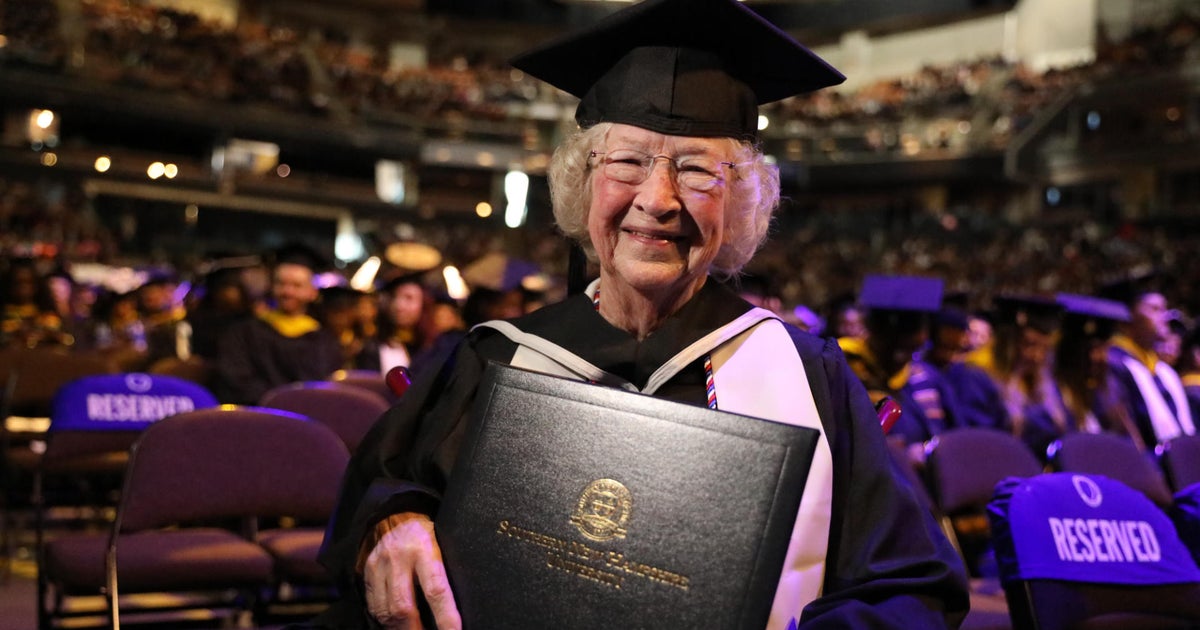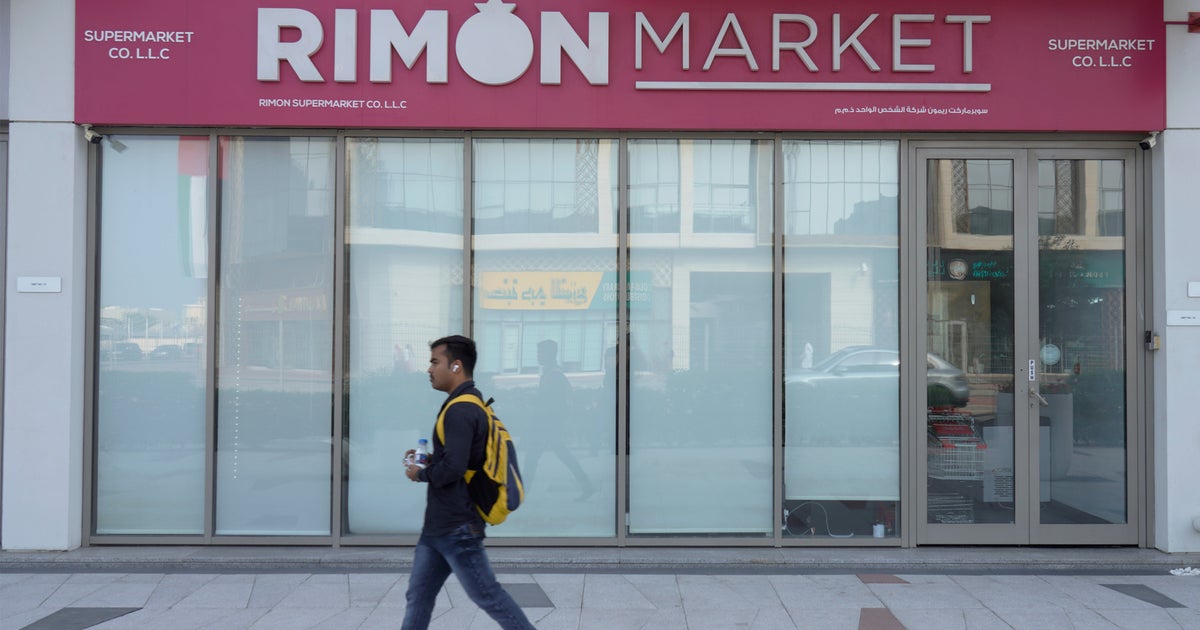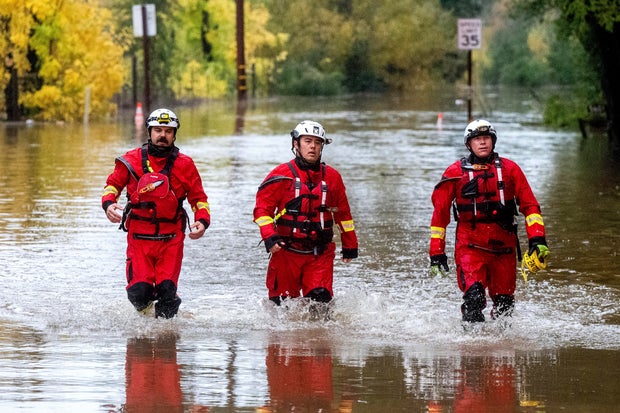CBS News
What the health care sector is selling to Wall Street: The “first trillion-dollar drug company is out there”

Every year, thousands of bankers, venture capitalists, private equity investors and other moneybags flock to San Francisco’s Union Square to pursue deals.
Scores of security guards keep the homeless, the snoops and the patent-stealers at bay, while the dealmakers pack into the cramped Westin St. Francis hotel and its surrounds to meet with cash-hungry executives from biotech and other health care companies.
After a few years of pandemic slack, the 2024 J.P. Morgan Healthcare Conference regained its full vigor, drawing 8,304 attendees in early January to talk science, medicine and, especially, money.
Artificial intelligence: Revolutionary or not?
Of the 624 companies that pitched at the four-day conference, the biggest overflow crowd may have belonged to Nvidia, which unlike the others isn’t a health care company.
Nvidia makes the silicon chips whose computing power, when paired with ginormous catalogs of genes, proteins, chemical sequences and other data, will “revolutionize” drug-making, according to Kimberly Powell, the company’s vice president of health care. Soon, she said, computers will customize drugs as “health care becomes a technology industry.”
One might think that such advances could save money, but Powell’s emphasis was on their potential for wealth creation. “The world’s first trillion-dollar drug company is out there somewhere,” she dreamily opined.
Some health care systems are also hyping AI. The Mayo Clinic, for example, highlighted AI’s capacity to improve the accuracy of patient diagnoses. The nonprofit hospital system presented an electrocardiogram algorithm that can predict atrial fibrillation three months before an official diagnosis; another Mayo AI model can detect pancreatic cancer on scans earlier than a provider could, said Matthew Callstrom, chair of radiology at the Mayo Clinic in Rochester, Minnesota.
No one really knows how far — or where — AI will take health care, but Nvidia’s recently announced $100 million deal with Amgen, which has access to 500 million human genomes, made some conference attendees uneasy.
If Big Pharma can discover its own drugs, “biotech will disappear,” said Sherif Hanala of Seqens, a contract drug manufacturing company, during a lunch-table chat with KFF Health News and others.
Others shrugged off that notion. The first AI algorithms beat clinicians at analyzing radiological scans in 2014. But since that year, “I haven’t seen a single AI company partner with pharma and complete a phase I human clinical trial,” said Alex Zhavoronkov, founder and CEO of Insilico Medicine — one of the companies using AI to do drug development. “Biology is hard.”
Weight loss pill profits and doubts
With predictions of a $100 billion annual market for GLP-1 agonists, the new class of weight loss drugs, many investors were asking their favorite biotech entrepreneurs whether they had a new Ozempic or Mounjaro in the wings this year, Zhavoronkov noted.
In response, he opened his parlays with investors by saying, “I have a very cool product that helps you lose weight and gain muscle.” Then he would hand the person a pair of Insilico Medicine-embossed bicycle racing gloves.
More conventional discussions about the GLP-1s focused on how insurance will cover the current $13,000 annual cost for the estimated 40% of Americans who are obese and might want to go on the drugs.
Sarah Emond, president of the Institute for Clinical and Economic Review, which calculates the cost and effectiveness of medical treatments, said that in the United Kingdom the National Health Service began paying in 2022 for obese patients to receive two years of semaglutide — something neither Medicare nor many insurers are covering in the U.S. even now.
But studies show people who go off the drugs typically regain two-thirds of what they lose, said Diana Thiara, medical director for the University of California-San Francisco weight management program.
Recent research shows that the use of these drugs for three years reduces the risk of death, heart attack and stroke in non-diabetic overweight patients. To do right by them, the U.S. health care system will have to reckon with the need for long-term use, she said.
“I’ve never heard an insurer say, ‘After two years of treating this diabetes, I hope you’re finished,'” she said. “Is there a bias against those with obesity?”
Spotlight on tax-exempt hospitals
Nonprofit hospitals showed off their investment appeal at the conference. Fifteen health systems representing major players across the country touted their value and the audience was intrigued: When headliners like the Mayo Clinic and the Cleveland Clinic took the stage, chairs were filled, and late arrivals crowded in the back of the room.
These hospitals, which are supposed to provide community benefits in exchange for not paying taxes, were eager to demonstrate financial stability and showcase money-making mechanisms besides patient care — they call it “revenue diversification.” PowerPoints skimmed through recent operating losses and lingered on the hospital systems’ vast cash reserves, expansion plans and for-profit partnerships to commercialize research discoveries.
At Mass General Brigham, such research has led to the development of 36 drugs currently in clinical trials, according to the hospital’s presentation. The Boston-based health system, which has $4 billion in committed research funding, said its findings have led to the formation of more than 300 companies in the past decade.
Hospital executives thanked existing bondholders and welcomed new investors.
“For those of you who hold our debt, taxable and tax-exempt, thank you,” John Mordach, chief financial officer of Jefferson Health, a health system in Pennsylvania and New Jersey. “For those who don’t, I think we’re a great, undervalued investment, and we get a great return.”
Other nonprofit hospitals talked up institutes to draw new patients and expand into lucrative territories. Sutter Health, based in California, said it plans to add 30 facilities in attractive markets across Northern California in the next three years. It expanded to the Central Coast in October after acquiring the Sansum Clinic.
Money from new — and old — treatments for autoimmune disease
Autoimmunity drugs, which earn the industry $200 billion globally each year, were another hot theme, with various companies talking up development programs aimed at using current cancer drug platforms to create remedies for conditions like lupus and rheumatoid arthritis.
AbbVie, which has led the sector with its $200 billion Humira, the world’s best-selling drug, had pride of place at the conference with a presentation in the hotel’s 10,000-square-foot Grand Ballroom.
President and Chief Operating Officer Robert Michael crowed about the company’s newer autoimmune drugs, Skyrizi and Rinvoq, and bragged that sales of two-decades-old Humira were going “better than anticipated.” Although nine biosimilar — essentially, generic — versions of the drug, adalimumab, entered the market last year, AbbVie expects to earn more than $7 billion on Humira this year since the “vast majority” of patients will remain on the market leader.
In its own presentation, biosimilar-maker Coherus BioSciences conceded that sales of Yusimry, its Humira knockoff listed at one-seventh the price of the original, would be flat until 2025, when Medicare changes take effect that could push health plans toward using cheaper drugs.
Biosimilars could save the U.S. health care system $100 billion a year, said Stefan Glombitza, CEO of Munich-based Formycon, another biosimilar-maker, but there are challenges since each biosimilar costs $150 million to $250 million to develop. Seeing nine companies enter the market to challenge Humira “was shocking,” he said. “I don’t think this will happen again.”
KFF Health News, formerly known as Kaiser Health News (KHN), is a national newsroom that produces in-depth journalism about health issues and is one of the core operating programs at KFF — the independent source for health policy research, polling, and journalism.
CBS News
90-year-old great-grandmother graduates from New Hampshire college 50 years after finishing degree

MANCHESTER N.H. – Some people may have thought there was a celebrity in the building at Southern New Hampshire University’s graduation on Saturday. Annette Roberge certainly felt like one as she crossed the stage to get her diploma at 90 years old.
“I’m still on cloud nine,” Roberge said. “I can’t even put it into words. It was exhilarating, it was awesome, it was beyond anything I could’ve possibly imagined.”
Southern New Hampshire University
Degree 50 years in the making
This degree has been decades in the making for the mother of five, grandmother of 12, and great-grandmother of 15. She began taking classes at New Hampshire College, now SNHU, in 1972 one year after her husband of 20 years was killed in Vietnam.
Southern New Hampshire University
She completed several night and weekend courses before it took a backseat to her five kids and two jobs. Roberge worked as an insurance agent while she finished up as a lunch lady at a nearby school. Roberge retired at age 75, but she was a woman who loved learning, and she knew something was missing from her life.
“If I started something I just have to finish it,” Roberge said.
But it wasn’t until recently that Roberge’s daughter began poking around and learned her mom had earned enough credits for an associate’s degree in business administration. Barring some health challenges, Roberge finally walked across the stage on Saturday to the roaring cheers from her fellow graduates and a standing ovation.
“Never give up on learning because what you learn can never be taken away from you,” Roberge said.
“It matters so much for the example it sets about what we do for ourselves, to keep learning and stretching and growing,” SNHU President Lisa Marsh Ryerson said.
“Don’t ever give up on a dream”
Roberge even had a parting message for all of her new fellow graduates.
“If you’ve got a dream don’t let it just sit there. Do something, make it work, don’t ever give up on a dream.”
If you thought Roberge would be satisfied with her associate’s degree you’d be wrong. She plans to start working towards her bachelor’s degree in January.
CBS News
Potential winter storms forecast across U.S. on Thanksgiving week could impact holiday travel

Forecasters around the United States have issued severe weather warnings ahead of another wave of winter storms that could potentially affect travel around the upcoming Thanksgiving holiday. Meanwhile, parts of the Pacific Northwest and California continued to recover from storm damage and widespread power outages, as they braced for more impact.
In California, where a person was found dead in a vehicle submerged in floodwaters on Saturday, authorities braced for more precipitation while grappling with flooding and small landslides from a previous storm. Thousands in the Pacific Northwest remained without power after multiple days in the dark.
The National Weather Service office in Sacramento, California, issued a winter storm warning for the state’s Sierra Nevada for Saturday through Tuesday, with heavy snow expected at higher elevations and wind gusts potentially reaching 55 miles per hour. Total snowfall of roughly 4 feet was forecast, with the heaviest accumulations expected Monday and Tuesday.
“A weak low pressure system will continue directing a plume of moisture at the West Coast over the next few days,” the Weather Prediction Center said in an advisory Sunday, which was effective through Tuesday. “This will likely result in coastal and low elevation rain, while moderate to heavy snow proliferates across the coastal ranges of Washington, Oregon and California.”
The heaviest snow was expected to fall over sections of the Sierra Nevada, forecasters said, noting that areas in the Colorado Rockies would likely see snow showers, too, over the next few days. Another atmospheric river event was forecast to arrive in parts of central California on Tuesday.
The Midwest and Great Lakes regions will see rain and snow Monday and the East Coast will be the most impacted on Thanksgiving and Black Friday, forecasters said.
CBS News meteorologist Nikki Nolan said the holiday outlook was still uncertain at the end of last week, but the weather system could bring rain and snow to the northeastern U.S. while causing temperatures to drop across most of the country, outside of the Southeast.
“While models can change in the days ahead, Thanksgiving Day is showing a low-pressure system moving across the East and entering the Northeast by evening hours,” Nolan said Friday.
Noah Berger / AP
A low-pressure system is forecast to bring rain to the Southeast early Thursday before heading to the Northeast. Areas from Boston to New York could see rain and strong winds, with snowfall possible in parts of northern New Hampshire, northern Maine and the Adirondacks. If the system tracks further inland, there could be less snow and more rain in the mountains, forecasters said.
Earlier this week, at least two people died when severe weather struck the Pacific Northwest, bringing powerful wind and rain, closing schools, and causing widespread power outages. The two who died were killed by falling trees in Lynnwood and Bellevue, both in Washington state, officials said. Hundreds of thousands lost power, mostly in the Seattle area, before strong winds moved through Northern California.
Rescue crews in Guerneville, California, recovered a body inside a vehicle bobbing in floodwaters around 11:30 a.m. Saturday, Sonoma County Sheriff’s Deputy Rob Dillion said, noting the deceased was presumed to be a victim of the storm but an autopsy had not yet been conducted.
Santa Rosa, California, saw its wettest three-day period on record with about 12.5 inches of rain by Friday evening, the National Weather Service in the Bay Area reported. Vineyards in nearby Windsor, California, were flooded on Saturday.
Some 80,000 people in the Seattle area were still without electricity after this season’s strongest atmospheric river, a long plume of moisture that forms over an ocean and flows over land. The atmospheric river overwhelmed parts of the Pacific Northwest as well as California, and was the strongest weather event of its kind seen all season.
The storm system hit the area Tuesday. It was considered a “bomb cyclone,” which occurs when a cyclone intensifies rapidly. Although the intensity of the atmospheric river peaked later in the week, forecasters had warned that another bout of severe weather was still yet to come.
Godofredo A. Vásquez / AP
The power came back in the afternoon at Katie Skipper’s home in North Bend, about 30 miles east of Seattle, after being out since Tuesday. She was tired from taking cold showers, warming herself with a wood stove and using a generator to run the refrigerator, but Skipper said those inconveniences paled in comparison to the damage other people suffered, such as from fallen trees.
“That’s really sad and scary,” she said.
Another storm brought rain to New York and New Jersey, where rare wildfires have raged in recent weeks, and heavy snow to northeastern Pennsylvania. The precipitation was expected to help ease drought conditions after an exceptionally dry fall.
“It’s not going to be a drought buster, but it’s definitely going to help when all this melts,” said Bryan Greenblatt, a National Weather Service meteorologist in Binghamton, New York.
Heavy snow fell in northeastern Pennsylvania, including the Pocono Mountains. Higher elevations reported up to 17 inches, with lesser accumulations in valley cities including Scranton and Wilkes-Barre. Less than 80,000 customers in 10 counties lost power.
Precipitation in West Virginia helped put a dent in the state’s worst drought in at least two decades and boosted ski resorts preparing to open their slopes in the weeks ahead.
CBS News
Missing rabbi killed in the UAE in “heinous antisemitic terror incident,” Israel says

Israel said Sunday that the body of an Israeli-Moldovan rabbi who went missing in the United Arab Emirates has been found after he was killed in what it described as a “heinous antisemitic terror incident.”
The statement from Prime Minister Benjamin Netanyahu’s office said Israel “will act with all means to seek justice with the criminals responsible for his death.” There was no immediate comment from the UAE.
Zvi Kogan, 28, an ultra-Orthodox rabbi who went missing on Thursday, ran a Kosher grocery store in the futuristic city of Dubai, where Israelis have flocked for commerce and tourism since the two countries forged diplomatic ties in the 2020 Abraham Accords.
Jon Gambrell / AP
The agreement has held through more than a year of soaring regional tensions unleashed by Hamas’ Oct. 7, 2023 attack into southern Israel. But Israel’s devastating retaliatory offensive in Gaza and its invasion of Lebanon, after months of fighting with the Hezbollah militant group, have stoked anger among Emiratis, Arab nationals and others living in the UAE.
Iran, which supports Hamas and Hezbollah, has also been threatening to retaliate against Israel after a wave of airstrikes Israel carried out in October in response to an Iranian ballistic missile attack.
The Emirati government did not respond to a request for comment.
Early Sunday, the UAE’s state-run WAM news agency acknowledged Kogan’s disappearance but pointedly did not acknowledge he held Israeli citizenship, referring to him only as being Moldovan. The Emirati Interior Ministry described Kogan as being “missing and out of contact.”
“Specialized authorities immediately began search and investigation operations upon receiving the report,” the Interior Ministry said.
Netanyahu told a regular Cabinet meeting later Sunday that he was “deeply shocked” by Kogan’s disappearance and death. He said he appreciated the cooperation of the UAE in the investigation and said that ties between the two countries would continue to be strengthened.
Israel’s largely ceremonial president, Isaac Herzog, condemned the killing and thanked Emirati authorities for “their swift action.” He said he trusts they “will work tirelessly to bring the perpetrators to justice.”
Kogan was an emissary of the Chabad Lubavitch movement, a prominent and highly observant branch of ultra-Orthodox Judaism based in Brooklyn’s Crown Heights neighborhood in New York City. It said he was last seen in Dubai. The UAE has a burgeoning Jewish community, with synagogues and businesses catering to kosher diners.
The Rimon Market, a Kosher grocery store that Kogan managed on Dubai’s busy Al Wasl Road, was shut down Sunday. As the wars have roiled the region, the store has been the target of online protests by supporters of the Palestinians. Mezuzahs on the front and the back doors of the market appeared to have been ripped off when an Associated Press journalist stopped by on Sunday.
Kogan’s wife, Rivky, is a U.S. citizen who lived with him in the UAE. She is the niece of Rabbi Gavriel Holtzberg, who was killed in the 2008 Mumbai attacks.
The UAE is an autocratic federation of seven sheikhdoms on the Arabian Peninsula and is also home to Abu Dhabi. Local Jewish officials in the UAE declined to comment.
While the Israeli statement did not mention Iran, Iranian intelligence services have carried out past kidnappings in the UAE.
Western officials believe Iran runs intelligence operations in the UAE and keeps tabs on the hundreds of thousands of Iranians living across the country.
Iran is suspected of kidnapping and later killing British Iranian national Abbas Yazdi in Dubai in 2013, though Tehran has denied involvement. Iran also kidnapped Iranian German national Jamshid Sharmahd in 2020 from Dubai, taking him back to Tehran, where he was executed in October.














